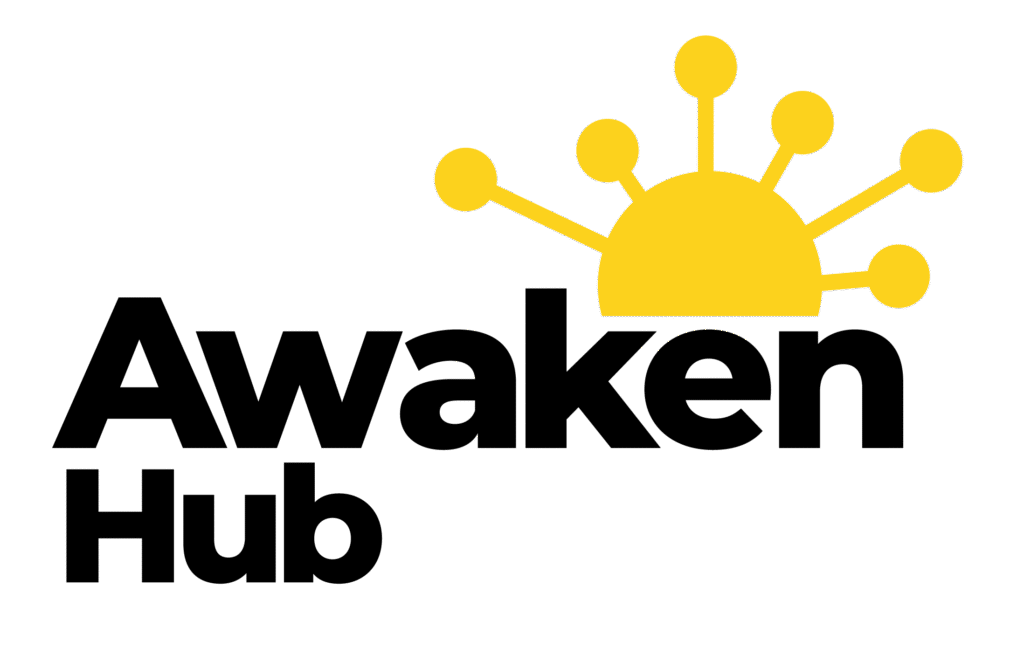Revamp Your Small Business Website for Success
In the digital landscape of Ireland, a professional website design is not merely an aesthetic choice; it is a fundamental…
In the digital landscape of Ireland, a professional website design is not merely an aesthetic choice; it is a fundamental aspect of your online presence. When potential customers land on your site, their first impression can significantly influence their perception of your brand. A well-designed website conveys credibility and trustworthiness, essential elements for any business aiming to thrive in a competitive market.
In Ireland, where consumers are increasingly discerning, investing in a polished and professional website can set you apart from competitors who may overlook this critical aspect. Moreover, a professional website design goes beyond visual appeal. It encompasses functionality, ensuring that your site operates smoothly and efficiently.
This is particularly important in Ireland, where internet users expect quick loading times and seamless navigation. A website that is visually stunning but difficult to use can frustrate visitors, leading them to abandon your site in favour of a competitor’s. Therefore, prioritising professional design not only enhances your brand image but also improves user retention and conversion rates.
Summary
- A professional website design is crucial for creating a positive first impression and building trust with visitors.
- Understanding user experience and navigation is essential for keeping visitors engaged and guiding them towards desired actions.
- Integrating mobile responsiveness is necessary to ensure a seamless experience for users across different devices.
- Optimising for search engines is important for improving visibility and driving organic traffic to the website.
- Creating engaging and relevant content is key to attracting and retaining visitors, and ultimately converting them into customers.
Understanding User Experience and Navigation
User experience (UX) is at the heart of effective website design, especially in the context of the Irish market. You must consider how visitors interact with your site and what they expect from their online journey. A well-structured navigation system is crucial; it should guide users effortlessly through your content, allowing them to find what they need without confusion.
In Ireland, where consumers value efficiency, a straightforward navigation menu can significantly enhance their experience, encouraging them to explore more of what you have to offer. To optimise user experience, you should also focus on the layout and organisation of your content. Clear headings, intuitive categorisation, and strategically placed calls to action can lead users through their journey on your site.
Additionally, incorporating feedback mechanisms can provide insights into how users perceive their experience. By actively seeking input from your audience, you can make informed adjustments that cater to their preferences, ultimately fostering a more engaging and satisfying interaction with your brand.
Integrating Mobile Responsiveness

In today’s digital age, mobile responsiveness is no longer optional; it is a necessity for any website aiming to succeed in Ireland. With an increasing number of users accessing the internet via smartphones and tablets, ensuring that your site is mobile-friendly is crucial for reaching a broader audience. A responsive design adapts seamlessly to various screen sizes, providing an optimal viewing experience regardless of the device being used.
This adaptability not only enhances user satisfaction but also positively impacts your search engine rankings. Furthermore, consider the unique behaviours of Irish consumers when browsing on mobile devices. They often seek quick information or services while on the go.
Therefore, your mobile site should prioritise speed and accessibility, allowing users to find what they need with minimal effort. By integrating mobile responsiveness into your website design, you are not only catering to current trends but also future-proofing your business against the ever-evolving digital landscape.
Optimising for Search Engines
| Metrics | Data |
|---|---|
| Keyword Density | 3-5% |
| Meta Description Length | 150-160 characters |
| Page Load Time | Less than 3 seconds |
| Backlinks | Quality over quantity |
| Mobile Friendliness | Responsive design |
Search engine optimisation (SEO) is a critical component of digital marketing in Ireland. To ensure that your website reaches its intended audience, you must implement effective SEO strategies that enhance visibility on search engines. This involves researching relevant keywords that resonate with your target market and incorporating them naturally into your content.
By doing so, you increase the likelihood of appearing in search results when potential customers are looking for products or services similar to yours. In addition to keyword optimisation, you should focus on technical SEO aspects such as site speed, mobile-friendliness, and secure connections (HTTPS). These factors not only improve user experience but also signal to search engines that your site is trustworthy and relevant.
Regularly updating your content and maintaining an active blog can further boost your SEO efforts by providing fresh material for search engines to index. By prioritising SEO in your digital marketing strategy, you position your business for greater visibility and success in the competitive Irish market.
Creating Engaging and Relevant Content
Content is king in the realm of digital marketing, particularly in Ireland where consumers are drawn to informative and engaging material. You should strive to create content that resonates with your audience’s interests and needs. This could include blog posts, videos, infographics, or podcasts that provide value and insight into your industry.
By establishing yourself as a thought leader through high-quality content, you can build trust with your audience and encourage them to return to your site. Moreover, consider the importance of storytelling in your content strategy. Irish consumers often appreciate brands that share their stories and values authentically.
By weaving narratives into your content, you can create a deeper connection with your audience, making them more likely to engage with your brand on multiple levels. Regularly updating your content not only keeps it fresh but also signals to search engines that your site is active and relevant, further enhancing your SEO efforts.
Utilising Social Media Integration

Enhancing User Engagement
Integrating social media into your website can significantly boost user engagement and expand your online presence. It is advisable to incorporate social sharing buttons into your content, thereby enabling visitors to effortlessly share their favourite articles or products with their networks.
Fostering a Sense of Community
This not only increases visibility but also cultivates a sense of community around your brand. Moreover, showcasing social media feeds on your website can provide real-time updates and encourage visitors to follow you on various platforms. This integration creates a seamless experience for users who wish to engage with your brand beyond the confines of your website.
Strengthening Customer Relationships
By actively participating in social media conversations and sharing user-generated content, you can further strengthen your relationship with customers while amplifying your brand’s presence in the Irish market.
Implementing E-commerce Functionality
For businesses looking to sell products or services online in Ireland, implementing e-commerce functionality is essential. A well-designed e-commerce platform allows customers to browse products effortlessly, add items to their cart, and complete transactions securely. You should ensure that the checkout process is streamlined and user-friendly to minimise cart abandonment rates—a common issue faced by many online retailers.
Moreover, consider incorporating features such as product reviews and recommendations to enhance the shopping experience. Irish consumers often rely on peer feedback when making purchasing decisions; therefore, showcasing positive reviews can significantly influence their choices. Additionally, offering multiple payment options can cater to diverse customer preferences, making it easier for them to complete their purchases confidently.
Monitoring and Analysing Website Performance
To ensure the ongoing success of your digital marketing efforts in Ireland, monitoring and analysing website performance is crucial. You should utilise tools such as Google Analytics to track key metrics such as traffic sources, user behaviour, and conversion rates. By understanding how visitors interact with your site, you can identify areas for improvement and make data-driven decisions that enhance user experience.
Regularly reviewing performance data allows you to adapt your strategies based on real-time insights. For instance, if you notice a high bounce rate on specific pages, it may indicate that the content needs refinement or that navigation could be improved. By staying attuned to these metrics and making necessary adjustments, you can optimise your website’s performance over time, ensuring that it continues to meet the evolving needs of Irish consumers in an ever-changing digital landscape.
If you are considering a small business website redesign, you may also be interested in learning about how to generate SEO leads from LinkedIn. This article from com/how-to-generate-seo-leads-from-linkedin/’>The Digital Projects provides valuable insights on leveraging LinkedIn for SEO lead generation.
Additionally, understanding the importance of SEO for startups in Dublin can greatly benefit your redesigned website. Check out the article on SEO for startups in Dublin to enhance your online presence. Furthermore, incorporating SEO strategies for lead generation and direct marketing can help drive traffic to your newly redesigned website. Learn more about this topic in the article on SEO for lead generation and direct marketing.
FAQs
What is a small business website redesign?
A small business website redesign is the process of updating and improving a company’s existing website to enhance its design, functionality, and user experience.
Why should a small business consider a website redesign?
A website redesign can help a small business stay competitive in the digital marketplace, improve user engagement, increase conversion rates, and reflect changes in the business’s branding or offerings.
What are the key benefits of a small business website redesign?
Some key benefits of a website redesign for a small business include improved user experience, enhanced visual appeal, better search engine visibility, increased website traffic, and higher conversion rates.
How often should a small business consider a website redesign?
The frequency of website redesigns can vary depending on the industry, business goals, and technological advancements. However, a small business should consider a website redesign at least every 2-3 years to stay current and relevant.
What are the steps involved in a small business website redesign?
The steps involved in a small business website redesign typically include conducting a website audit, setting clear goals and objectives, creating a redesign plan, implementing the redesign, testing the new website, and launching it.
How much does a small business website redesign cost?
The cost of a small business website redesign can vary depending on the complexity of the project, the size of the website, the features and functionality required, and the expertise of the web design agency. It is advisable to obtain quotes from multiple agencies to compare costs.
What are some best practices for a successful small business website redesign?
Some best practices for a successful small business website redesign include setting clear goals, understanding the target audience, prioritising mobile responsiveness, improving website speed, implementing SEO best practices, and integrating analytics for tracking performance.











